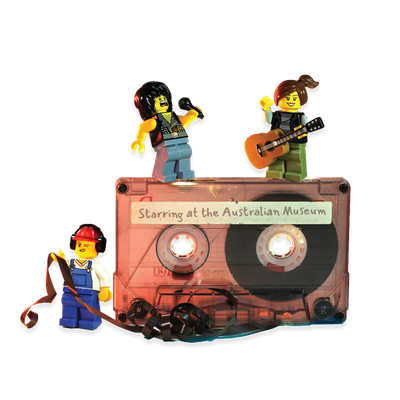Your search returned 23 results
By Page Type
By Tag
- All
- fish (966)
- blog (698)
- fishes of sydney harbour (400)
- First Nations (293)
- Blog (236)
- AMRI (169)
- archives (165)
- Aboriginal and Torres Strait Islander (135)
- Eureka Prizes (131)
- insect (126)
- Ichthyology (125)
- geoscience (109)
- minerals (102)
- climate change (98)
- podcast (94)
- Fish (91)
- Anthropology (89)
- International collections (80)
- Minerals Gallery (78)
- wildlife of sydney (78)
- Labridae (77)
- frog (73)
- gemstone (70)
- history (63)
- photography (63)
- staff (61)
- Mollusca (60)
- gem (59)
- Birds (58)
- education (57)
- Gems (56)
- Indonesia (56)
- AMplify (54)
- shark (54)
- people (53)
- exhibition (51)
- earth sciences (50)
- past exhibitions (50)
- Gobiidae (48)
- Pomacentridae (45)
- sustainability (45)
- Serranidae (44)
- science (43)
- lifelong learning (42)
- Earth and Environmental Science (41)
- Syngnathidae (41)
- Ancient Egypt (40)
- Bali (40)
- bird (40)
- dangerous australians (40)
-
Cutting gemstones
https://australian.museum/learn/minerals/gemstones/cutting-gemstones/Faceted gemstones reveal the inherent qualities of a mineral, such as colour (or lack of it), clarity, fire and brilliance, which might otherwise remain hidden.
-
Geological ore deposits
https://australian.museum/learn/minerals/geological-deposits/geological-ore-deposits/Geological ore deposits are of many different types and occur in all geological environments.
-
Mineral properties
https://australian.museum/learn/minerals/properties/Minerals can be identified using a number of properties. These include physical and chemical properties such as hardness, density, cleavage and colour, crystallography, electrical conductivity, magnetism, radioactivity and fluorescence.
-
Metamorphic processes
https://australian.museum/learn/minerals/shaping-earth/metamorphic-processes/Most minerals are only stable at particular temperatures and pressures, so changes in these result in the formation of new minerals.
-
Geological origin of gemstones
https://australian.museum/learn/minerals/gemstones/geological-origin-of-gemstones/Gemstones are formed below the Earth's surface and can sometimes show traces of other minerals, called inclusions.
-
Valuing gemstones
https://australian.museum/learn/minerals/gemstones/valuing-gemstones/Gemstones are valuable because they are a rare and desirable commodity. They also represent time and labour spent on cutting and presentation.
-
The Solar System
https://australian.museum/learn/minerals/shaping-earth/the-solar-system/The Solar System is dominated by the Sun and the planets that orbit around it.
-
Mineral groups
https://australian.museum/learn/minerals/what-are-minerals/mineral-groups/Minerals can be classified into distinct groups based upon similar atomic structure and/or chemical composition.
-
Jenolan Caves Minerals
https://australian.museum/learn/minerals/shaping-earth/mineralogy-collection-jenolan-caves-minerals/The Jenolan Caves are one of the premier tourist attractions of New South Wales. Nine caves are regularly shown to visitors, but several hundred of various sizes are known from the area.
-
New Information from Old Specimens
https://australian.museum/learn/collections/natural-science/mineralogy/mineralogy-collection-new-information-from-old-specimens/In many ways the future and relevance of museum collections often depend on their past. Some specimens remain in the collections for a long time, sometimes over 100 years before they prove vital for current research projects.
-
Find out more
Tails from the Coasts
Special exhibition
On now![]()
-
Find out more
Burra
Permanent kids learning space
10am - 4.30pm![]()
-
Discover more
RELICS
Special Exhibition
Opens 16 August 2025![]()
-
Discover more
Minerals
Permanent exhibition
Open daily![]()





